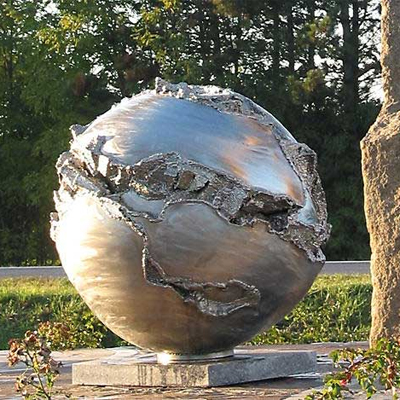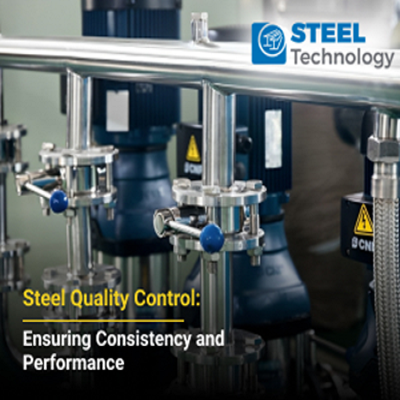Balancing Act: Incorporating Minor Metals in Steelmaking for Superior Results

Steelmaking is an intricate process that has evolved over millennia. It is the backbone of modern infrastructure, contributing to construction, transportation, and various industries. Traditionally, the steelmaking process primarily involves iron and carbon. However, the incorporation of minor metals has proven to enhance the properties of steel, providing superior results. This long-form content delves into the significance of minor metals in steelmaking, their effects, and the balancing act required to optimize their benefits.
A. Understanding Minor Metals in Steelmaking
Minor metals, often referred to as alloying elements, and are added to steel to improve its mechanical properties, such as strength, toughness, hardness, and resistance to wear and corrosion. These metals include but are not limited to:
- Chromium (Cr)
- Nickel (Ni)
- Manganese (Mn)
- Molybdenum (Mo)
- Vanadium (V)
- Tungsten (W)
- Cobalt (Co)
- Niobium (Nb)
- Titanium (Ti)
Each of these metals imparts unique characteristics to the steel, making it suitable for specific applications.
Chromium (Cr): Chromium is a key component in stainless steel, providing corrosion resistance. It forms a passive layer of chromium oxide on the steel's surface, protecting it from rust and degradation.
Nickel (Ni): Nickel enhances the toughness and strength of steel. It also contributes to corrosion resistance and is essential in the production of austenitic stainless steels.
Manganese (Mn): Manganese improves the hardenability of steel and its strength at high temperatures. It also deoxidizes and desulfurizes steel, enhancing its overall quality.
Molybdenum (Mo): Molybdenum increases the strength, hardness, and resistance to wear and high temperatures. It is particularly useful in steels exposed to extreme conditions.
Vanadium (V): Vanadium refines the grain structure of steel, enhancing its strength and toughness. It also contributes to wear resistance.
Tungsten (W): Tungsten improves the hardness and heat resistance of steel. It is commonly used in tool steels.
Cobalt (Co): Cobalt enhances the hardness and heat resistance of steel. It is often used in high-speed steels and other cutting tools.
Niobium (Nb): Niobium refines the grain structure of steel and improves its strength and toughness. It is used in high-strength low-alloy (HSLA) steels.
Titanium (Ti): Titanium stabilizes carbon and nitrogen in steel, preventing the formation of carbides and nitrides. It also enhances strength and corrosion resistance.
C. The Balancing Act: Optimizing Minor Metal Incorporation
Incorporating minor metals into steel is a complex process that requires careful consideration of several factors:
Proportion and Compatibility: The proportions of minor metals must be optimized to achieve the desired properties without compromising the steel's workability and weldability. Compatibility between different alloying elements is also crucial to prevent adverse interactions.
Cost and Availability: Minor metals can be expensive and their availability may fluctuate. Balancing the cost of these metals with the benefits they provide is essential for economic viability.
Processing Techniques: The incorporation of minor metals often requires advanced processing techniques, such as vacuum melting or powder metallurgy, to ensure uniform distribution and prevent defects.
Environmental and Regulatory Considerations: The extraction and processing of minor metals can have environmental impacts. Adhering to environmental regulations and adopting sustainable practices are important aspects of modern steelmaking.
Application-Specific Requirements: Different applications have specific requirements for steel properties. The selection and proportion of minor metals must align with these requirements to ensure optimal performance.
D. Case Studies: Successful Incorporation of Minor Metals
Stainless Steel Production: The incorporation of chromium and nickel in stainless steel production has revolutionized industries such as food processing, medical devices, and construction. The corrosion resistance and durability of stainless steel make it a preferred material in these applications.
High-Strength Low-Alloy (HSLA) Steels: The addition of vanadium, niobium, and titanium in HSLA steels has resulted in materials with superior strength-to-weight ratios. These steels are extensively used in automotive and aerospace industries to enhance fuel efficiency and safety.
Tool Steels: Tool steels, containing tungsten, cobalt, and molybdenum, exhibit exceptional hardness and heat resistance. They are indispensable in manufacturing tools and dies that withstand extreme conditions.
E. Future Trends and Innovations
The future of steelmaking lies in the continuous exploration of new minor metals and innovative processing techniques. Some emerging trends include:
Nano-Alloying: Incorporating minor metals at the nanoscale to achieve unprecedented levels of strength and toughness.
Recycling and Circular Economy: Enhancing the recycling of alloying elements from scrap steel to reduce dependency on virgin resources and minimize environmental impact.
Advanced Computational Modeling: Using computational models to predict the effects of different alloying elements and optimize their incorporation in steel.
Sustainable Practices: Developing sustainable extraction and processing methods for minor metals to align with environmental goals and regulatory standards.
Conclusion:
The incorporation of minor metals in steelmaking is a delicate balancing act that requires a deep understanding of metallurgy, economics, and environmental considerations. By carefully selecting and optimizing the use of these metals, steelmakers can produce superior steel with enhanced properties, catering to a wide range of applications. As technology advances, the steel industry will continue to innovate, finding new ways to incorporate minor metals and push the boundaries of what steel can achieve.
In conclusion, the journey of integrating minor metals into steelmaking is a testament to human ingenuity and the relentless pursuit of excellence in materials science. It exemplifies how a nuanced approach to alloying can lead to significant advancements, ensuring that steel remains a cornerstone of modern civilization.











